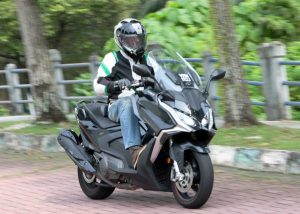PETALING JAYA: Petrol stations, hypermarkets, grocery shops and shopping malls will be housing more than half of the country’s existing and proposed electric vehicle (EV) public charging stations.
Data from the Malaysia Electric Vehicle Charging Network (MEVnet) dashboard shows that 1,001 or 24.9% of the 4,025 EV charging stations are at petrol stations.
Hypermarkets, supermarkets and grocery shops are the second most common type of location for charging stations, with a total of 646 locations (16.1%).
Shopping malls are the third biggest category with 417 stations (10.4%).
“Shopping mall and supermarket car parks are good locations for EV charging stations as users can charge while dining or doing their shopping,” said Malaysian Electric Vehicle Owners Club president Datuk Shahrol Halmi.
“Petrol stations are okay if users have something else to do while charging.
“From a user's perspective, the best charging locations are the ones that are available 24/7, without any need to perform manual tasks such as registering in a visitor's logbook,” he said.
The MEVnet dashboard is a joint effort between the Housing and Local Government and the Natural Resources and Environmental Sustainability ministries.

Malaysia aims to have at least 10,000 public EV charging bays in 4,025 EV charging stations nationwide by 2025.
Of the 4,025 EV charging stations, 918 (22.8%) have already been built as at July 31, while the remaining 3,107 (77.2%) are listed as “proposed”.
The Zero Emission Vehicle Association (Zeva) says that there were around 16,800 EVs on Malaysian roads at the end of 2023 and EV sales are expected to hit between 19,000 and 20,000 units this year.
RHB Research equity analyst Syahril Hanafiah said that assuming a consistent annual sale of 20,000 units for the next two years, there could be approximately 56,800 such vehicles on Malaysian roads by the end of 2025.
He noted that if there are 56,800 EVs on Malaysian roads in 2025 with 10,000 charging ports available, it would translate to a charger-to-EV ratio of 1:6.
“We believe this ratio is sufficient, especially considering China, the world’s largest EV market, had a charger-to-EV ratio of 1:7 as of the end of the first half of 2022.
“Additionally, a ratio of 1:6 aligns closely with Singapore’s target of 1:5,” he added.
Syahril, however, cautioned that merely having charging ports is not enough.
“These EV charging stations must be evenly distributed nationwide to ensure a comprehensive and accessible charging network, which is a key factor in promoting the adoption of EVs,” he said.
According to the MEVNet portal, the selection of proposed EV charging locations takes into account several factors.
They include household size and incomes, the extent of active car ownership and socioeconomic activities such as tourism.
Selangor will have the most EV charging locations once the full network is up next year, with 1,202 locations.
Johor would rank second with a total of 504 locations, out of which 87 have chargers installed.
Kuala Lumpur will have the third highest number of EV charging locations, with 438 stations, and 47.3% of its total locations have been installed with chargers.
Shahrol said the public charging infrastructure in urban areas, especially the Klang Valley, has developed rapidly over the past few years.
“What's lagging are highway charging locations, especially heading towards Kelantan and Terengganu,” he said.
Shahrol added that existing charging locations along the North South Expressway can also be improved by adding more charging bays per location, such as what DC Handal and Tesla have done on the West Coast Expressway (WCE) and at Gamuda Cove.
“Above all, more attention needs to be paid to ensure users living in high-rise buildings are able to charge overnight where their EVs are parked, just like how EV users living in landed properties do,” he said.












